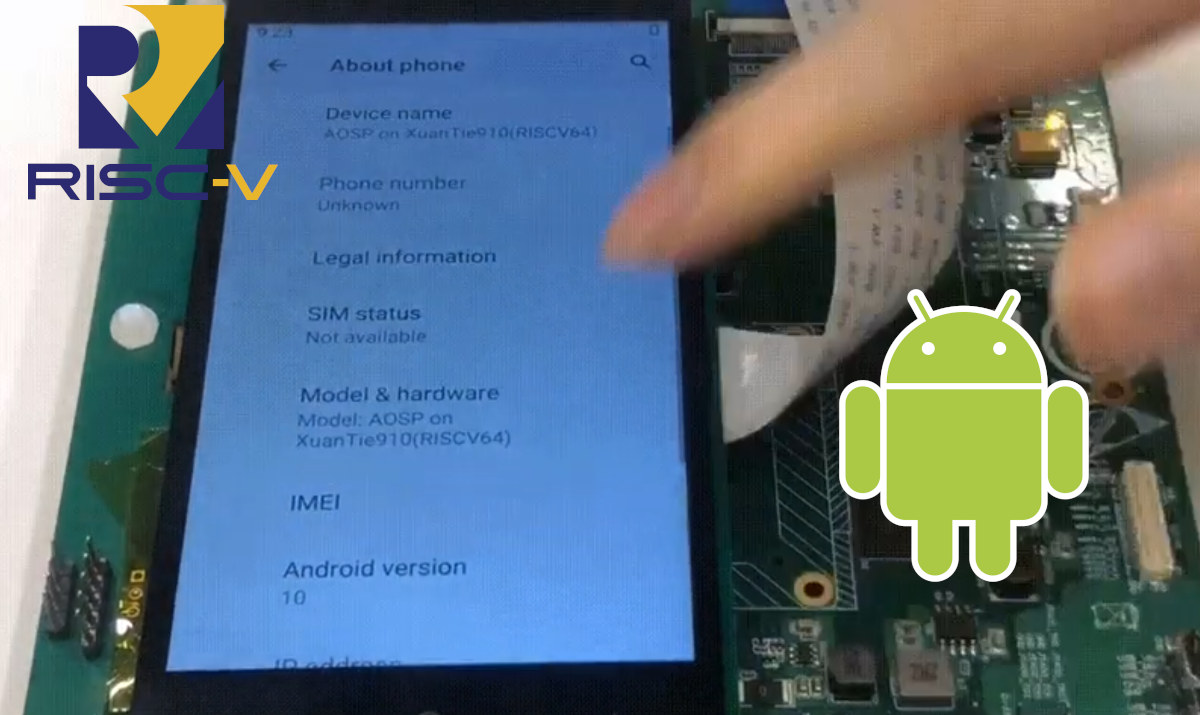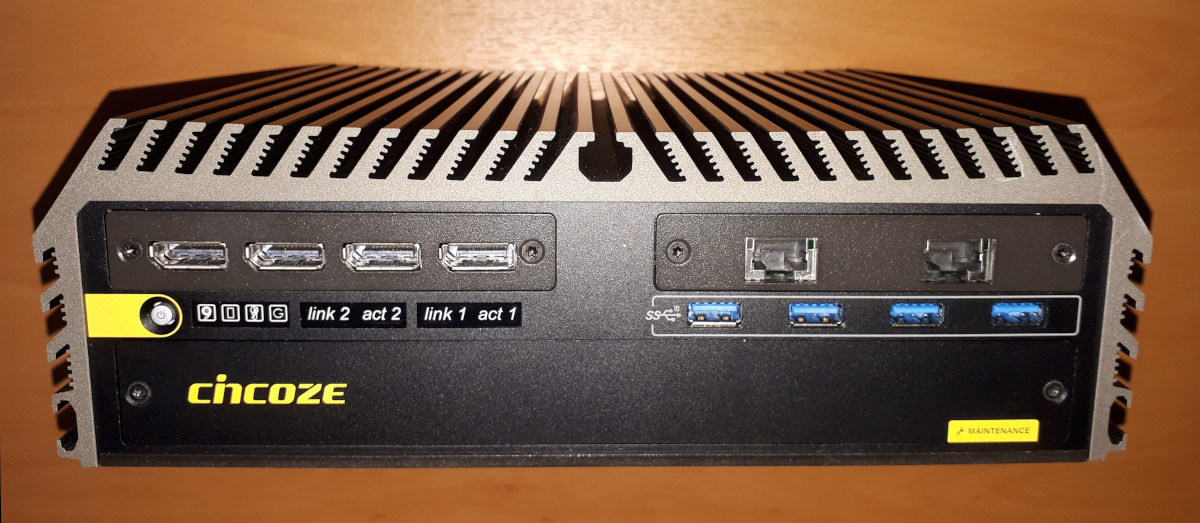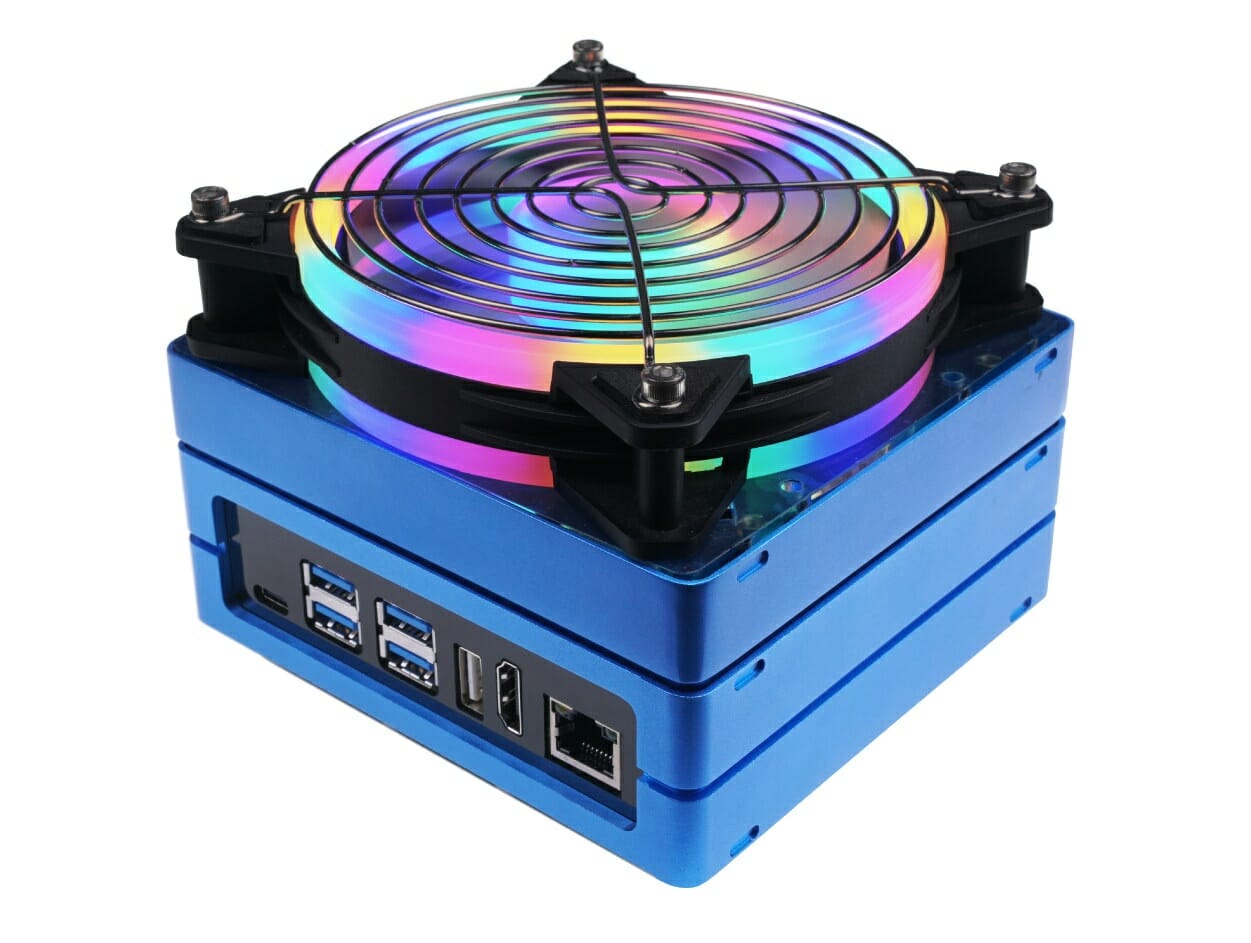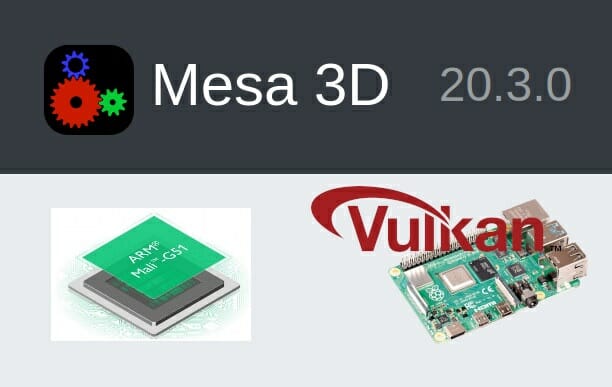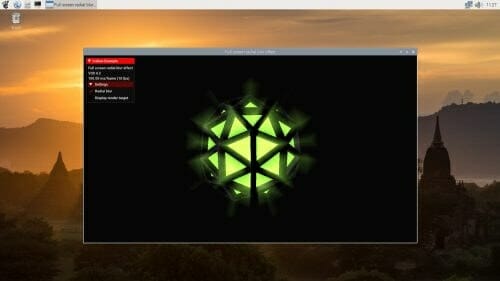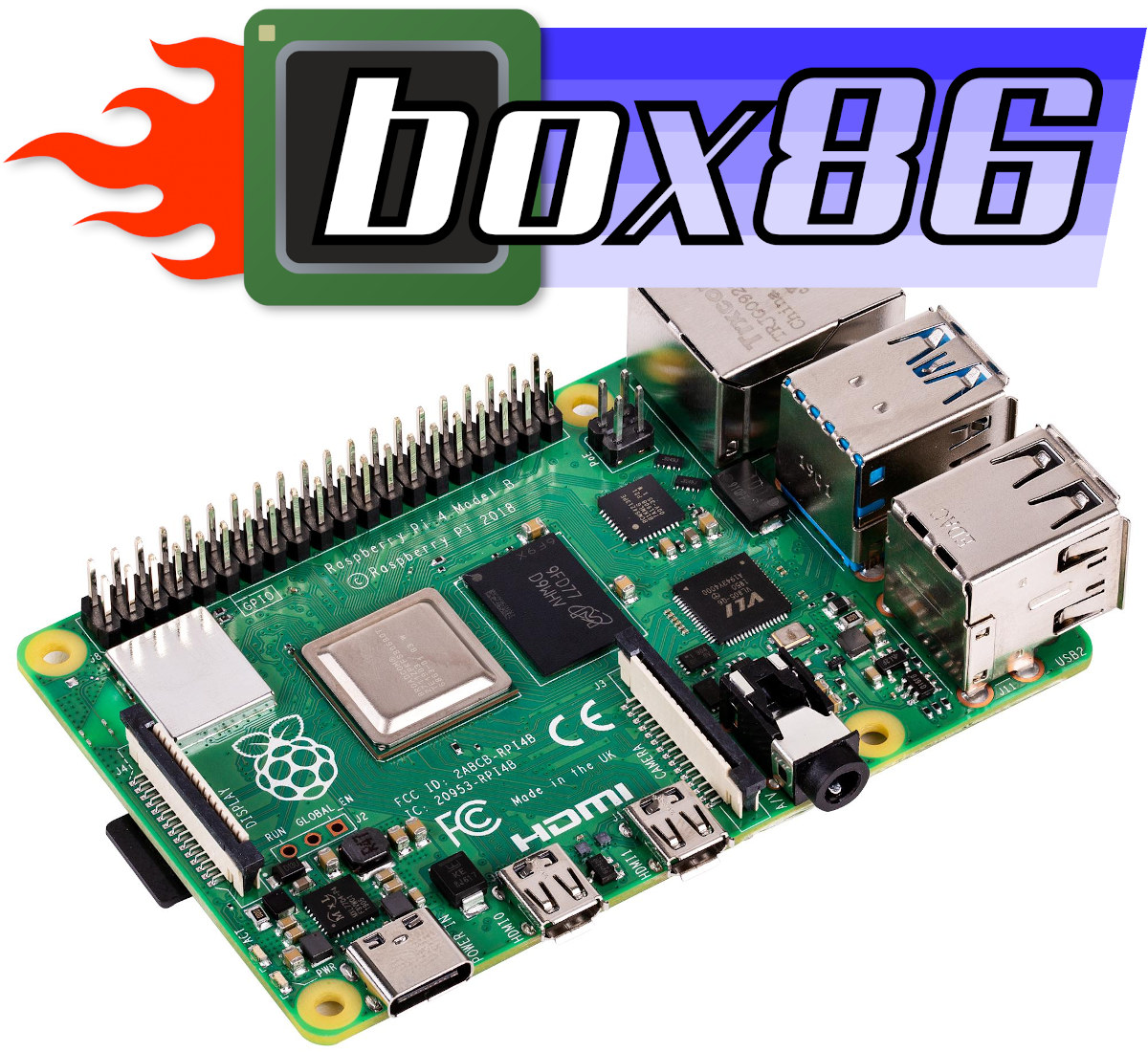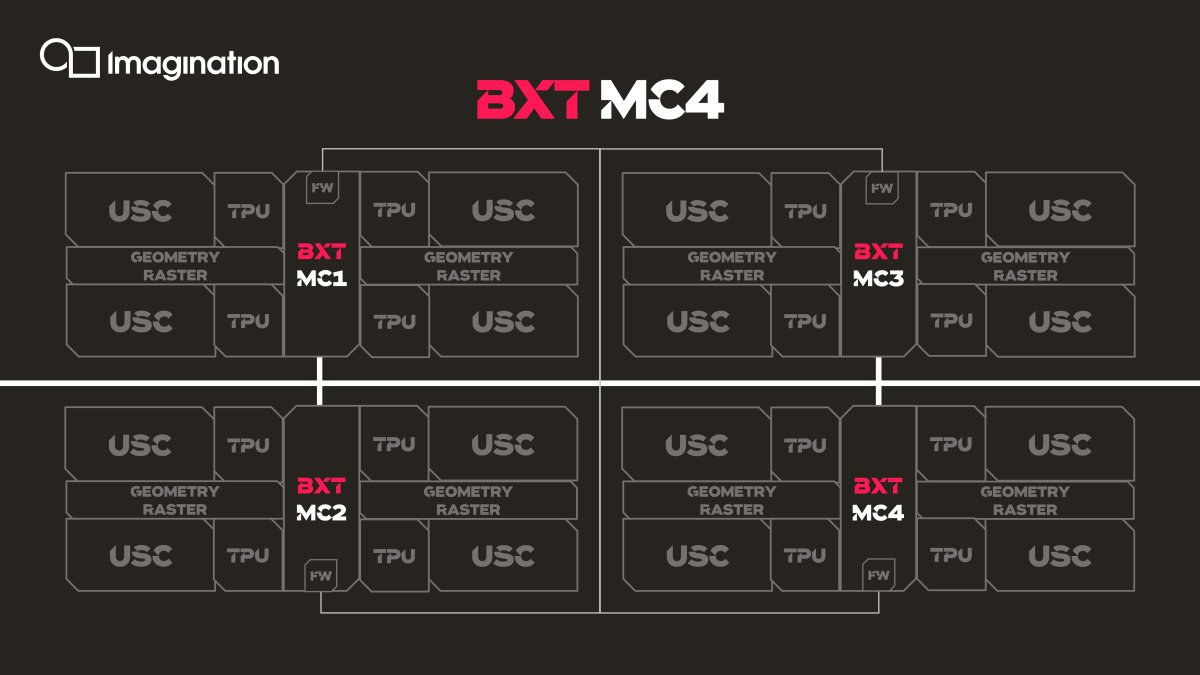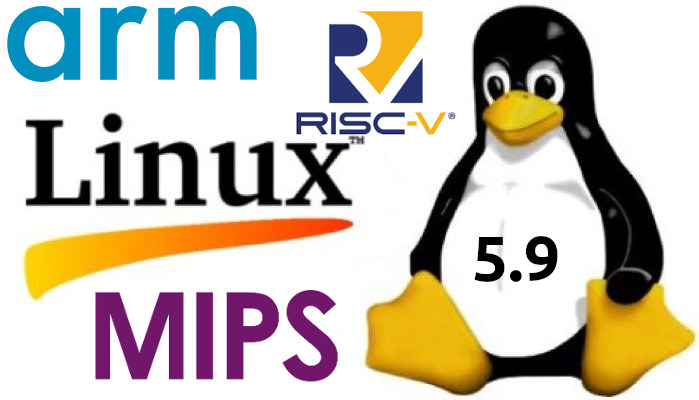RISC-V has made a lot of progress in just a few years, but for anything requiring 3D graphics acceleration, it’s not quite there yet. and we only expect RISC-V SoC with Imagination Technologies GPU to come out later this year on hardware such as BeagleV SBC. An OS that will definitely require 3D graphics acceleration is Android, and work has already started since T-Head, a business entity of Alibaba Group specializing in semiconductor chips, has already ported Android 10 (AOSP) on RISC-V architecture with support for graphics and the touchscreen display. The demo above runs on ICE EVB powered by a XuanTie C910 based high-performance SoC board developed by T-Head. Specifically, the ICE SoC integrates two XuanTie C910 cores (RV64) @ 1.2 GHz, one other XuanTie C910V core @ 1.2 GHz with vector extensions, a single-core 3D GPU core [Update: it’s a Vivante GC8000UL GPU], DDR4 memory support, a GMAC […]
Cincoze GM-1000 Embedded GPU Computer Review
Cincoze GM-1000 is an industrial embedded GPU computer. It is highly expandable including supporting an embedded MXM GPU. As a rugged computer, it can either be passively cooled or actively cooled with add-on fans. It can support an operating temperature ranging from -40°C – 70°C and is also able to survive being dropped or hit with a vibration/shock tolerance of 5G/50G. It is marketed as having all the features required for a compact, reliable, and high-performance computing system for field applications in machine vision, image processing, and artificial intelligence. In this review, I’ll cover some performance metrics from both Windows and Ubuntu and also discuss the thermals. Hardware Overview The model loaned by Cincoze for review came with an Intel Core i7-9700TE which is an eight-core 8-thread 1.80 GHz Coffee Lake-R processor boosting to 3.80 GHz with Intel’s UHD Graphics 630. It also came with an NVIDIA Quadro Embedded P2000 […]
Jetson Mate Cluster box takes four Jetson Nano/Xavier NX modules
While we’ve seen plenty of cluster boards based on Raspberry Pi SBC or Compute Modules, I had never seen clusters of Jetson modules. Those already exist, and PicoCluster has a few, but what made me write this post today is Seeed Studio’s Jetson Mate cluster box equipped with a carrier board taking up to four NVIDIA Jetson Nano or Xavier NX modules, an enclosure covered with a largish cooling fan with RGB LED for good effect… Jetson Mate specifications: SoM compatibility – Jetson Nano or Jetson Xavier NX via four SO-DIMM sockets Video Output – HDMI 2.0 Networking Gigabit Ethernet (RJ45) port Microchip KSZ9896CTXC 6-port GigE Managed Switch for internal networking between the modules and to the outside world Camera – 2x MIPI CSI connectors USB – 4x USB 3.0 ports (one per module), 1x USB 2.0 port, 1x USB-C port for power Debugging – UART debug pins (4x pairs, […]
Mesa 20.3 released with Raspberry Pi 4 V3DV driver, Panfrost Bifrost support
We’ve previously reported that the Vulkan 1.0 conformant V3DV driver for Raspberry Pi 4 and other Broadcom BCM2711 based platforms was part of Mesa 20.3 open-source graphics framework. But at the time, it was still under development. The good news is that Mesa 20.3 has now been released, and there’s much more than Raspberry Pi 4 support, as Collabora informed us the release also included Arm Mali Bifrost GPU support via the open-source Panfrost driver. The latter was made possible thanks to the work by Alyssa Rosenzweig and Boris Brezillon, with Alyssa going into details in a recent blog post on Collabora. More work is still needed with better performance and OpenGL 3.1 being the focus in the months ahead. But there were also many other changes in Mesa 20.3 as reported by Phoronix: OpenGL 4.6 and Vulkan 1.2 APIs support Initial support for Intel Gen12 Alder Lake graphics and […]
Raspberry Pi 4 V3DV graphics driver achieves Vulkan 1.0 conformance
Just a couple of weeks ago, we reported on the status of Raspberry Pi 4 Vulkan driver & future plans based on a presentation made by Igalia at the Open Source Summit 2020 at the end of October. At the time, the V3DV Vulkan Mesa driver for Raspberry Pi 4 was merged into Mesa, passed over 100,000 tests in the Kronos Conformance Test Suite (CTS), and was said to implement the full Vulkan 1.0 API. So it should come as no surprise that Khronos has now declared the Raspberry Pi drivers to be conformant with Vulkan 1.0 specifications. This was tested in Raspberry Pi OS with Linux 5.4.51 using X11 display server at 1920×1080 resolution on Raspberry Pi 4. Vulkan 1.0 conformance means the V3DV Mesa driver has passed all tests from Khronos CTS and should be compatible with most applications using this version of the API. The drivers will […]
Box86 is an x86 Emulator for Raspberry Pi and other 32-bit Arm platforms
Last week, we wrote about Raspberry Pi 4 Vulkan project status and future plans, and one person commented they are currently trying to get dxvk to work Box86, and that CNX Software should write about the latter. Cool, but what does that mean? dxvk is an open-source Vulkan-based implementation of D3D9, D3D10, and D3D11 for Linux, and Box86 is a Linux userspace x86 emulator that works on 32-bit Arm targets like the Raspberry Pi SBC. Nice, and I remember I ran x86 Linux and Windows on Raspberry Pi a few years ago using a closed-source commercial program called Exagear, but having an open-source solution is even better. That means 64-bit Arm is not supported at all, and Box86 can not even be built for Aarch64 targets. Since many x86 games require OpenGL, as opposed to OpenGL ES, Box86 works best in conjunction with gl4es. By installing Box86 on Raspberry Pi […]
Imagination IMG B-Series GPU family scales from IoT to the datacenter
Last year, Imagination Technologies unveiled IMG A-Series GPU family scaling from low-power IoT to mobile and high-performance server applications with up to 2.5 times the performance of the earlier PowerVR 9-series GPUs, as well as eight times faster AI processing and 60% less power under similar conditions. While I’m not aware of any SoCs announced with the new IMG A-Series GPU yet, the company has already announced the next-gen IMG B-Series GPU family with up to 4 times the multi-core performance thanks to decentralized multi-core technology, 30% lower power consumption, and 2.5 times the fill rate. The company offers four types of IM B-series GPU, each optimized for specific applications IMG BXE for high-resolution displays – From 1 up to 16 pixels per clock (PPC) BXE scales from 720p to 8K for UI rendering and entry-level gaming. IMG BXM designed for mid-range mobile gaming and complex UI solutions for DTV […]
Linux 5.9 Release – Main Changes, Arm, MIPS & RISC-V Architectures
Linus Torvalds has just announced the release of Linux 5.9 on lkml: Ok, so I’ll be honest – I had hoped for quite a bit fewer changes this last week, but at the same time there doesn’t really seem to be anything particularly scary in here. It’s just more commits and more lines changed than I would have wished for. The bulk of this is the networking fixes that I already mentioned as being pending in the rc8 release notes last weekend. In fact, about half the patch (and probably more of the number of commits) is from the networking stuff (both drivers and elsewhere). Outside of that, the most visible thing is a reinstatement of the fbdev amba-clcd driver – that’s a noticeable patch, but it’s basically just mainly a revert. The rest is really really tiny (mostly some other minor driver updates, but some filesystem and architecture fixes […]


